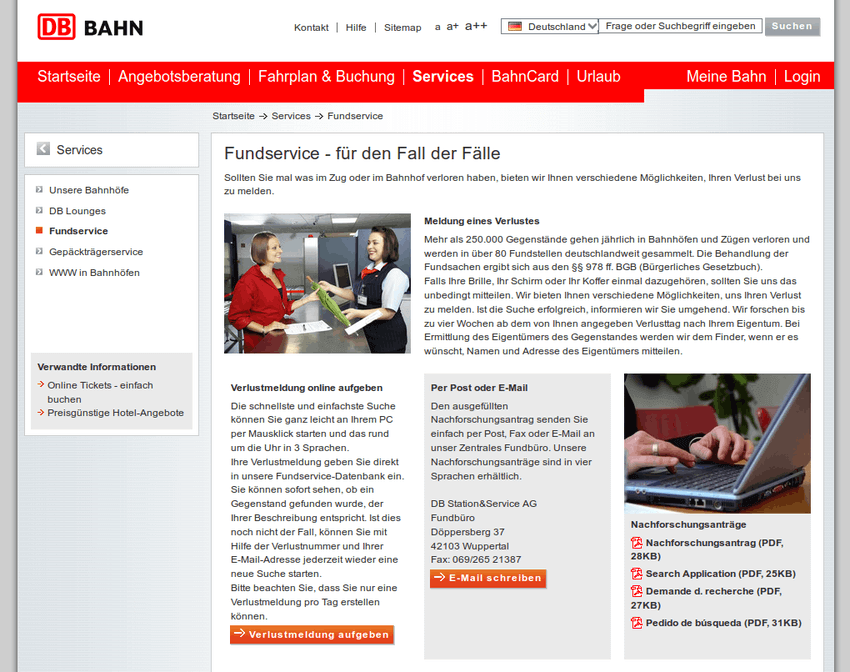For their successful, good life Information you really need: Government-funded publisher, awarded the Global Business Award as Publisher of the Year: Books, Shops, eCourses, data-driven AI-Services. Print and online publications as well as the latest technology go hand in hand - with over 20 years of experience, partners like this Federal Ministry of Education, customers like Samsung, DELL, Telekom or universities. behind it Simone Janson, German Top 10 blogger, referenced in ARD, FAZ, ZEIT, WELT, Wikipedia.
Disclosure & copyrights: Here you will find the hand-picked book recommendations in cooperation with our partner Managementbuch.de on the topics of economics, business and non-fiction. The reviewers are Stephan Lamprecht, Christiane furrier, Wolfgang Hanfstein & Oliver Ibelshäuser. The books were made available free of charge by the publisher, image rights from the publisher.
The 5 best books for customer acquisition: With the Kamasutra strategy to sales success {reading tip}
By Oliver Ibelshauser (More) • Wolfgang Hanfstein (More) • Last updated on October 20.08.2015, XNUMX • First published on 14.03.2016/XNUMX/XNUMX • So far 4823 readers, 1615 social media shares Likes & Reviews (5 / 5) • Read & write comments
Sales is a hard bread: on the one hand, you have to customers something at any cost merchandise. On the other hand, you also have to deal with complaints from dissatisfied customers. What helps: A little Kamasutra.
- Capture Aggressive Customers
- Is the customer still king?
- to build bridges
- Leave the church in the village
- The right answers for pesky customers
- Frustrated salesmen create frustrated customers
- The strategy of the 5 senses
- The buying process as an emotional experience
- Touching arguments in the sales talk
- The haptics always in view
- "Stop, Mr. Schmitz, I have a question!"
- Know what is coming to us
- Reward - but right!
- Way with the chair under the butt
- Always ready for the revolution
- Romance instead of security pact
- For all who have customers
- Explore markets that do not yet exist
- Catch up on customers
- Questions alone are not enough
- The right sense counts
- Define your own lifestyle
- Better opportunities for new products
- Service makes the difference
- One of them knows what he's talking about
- Look at the business with the eyes of the customers
- How are the employees?
- Do not talk but act
- Kama Sutra for SMEs
- Top books on the subject
- Read text as PDF
- Advice on success, goal achievement or marketing
- Book eCourse on Demand
- Skate eBook as desired
Capture Aggressive Customers
“The job as Adviser/Seller/Support staff would be really great if only there weren't so many annoying customers."
Do you recognize yourself in this statement? Monica Schori absolutely understands this attitude. Nevertheless, she cannot intercept aggressive customers. But capture. Your book “Surviving in Customer Contact” is ideal for this. In her book, Monica Schori shows how to skillfully deal with such situations.
Is the customer still king?
Because Schori helps to correct one's own attitude to the “Motzkis” on the other side of the counter or the telephone line, to bury the self-imposed demands for perfection and, if necessary, to counter them with a clever or witty saying.
In doing so, she shows everyone who is directly Contact standing with customers. how to skillfully deal with difficult situations and customers. A very useful guide for consultants, vendors and support staff. The motto could be:
"The Customer is king, but neither is the monarchy what it used to be”
to build bridges
With her practical advice, Schori builds the bridge between frustrated sellers and so-called “difficult” customers by putting the negative experiences in a healthy relationship to the overall balance:
Discounts for your success (advertising)!
"The Welt is full of friendly, grateful, likeable, understanding and humorous customers who satisfaction also show”.
The positive experiences only increase fast hidden, the author calculates:
“A single unpleasant customer contact often costs us more Energy than the rest of the day-to-day work.”
Leave the church in the village
When your customers explode with anger, your pulse stays low. Seriously. The annoyance of the customer not to your own Problem do, that's the Solution. Sounds abstract, but Schori gets very specific in her book. For example, if your caller yells “your place sucks!!” you can of course also go to the ceiling.
But it is better that you translate the outburst of rage soberly. “It not only had a bad experience - not with me, but with him Companys or even the whole Industry” and distance yourself emotionally “He doesn’t have his feelings under control – I do.” The reward for these intermediate steps: you immediately win the Control back about the situation.
The right answers for pesky customers
And to make sure that you are able to get the right answer, you will be able to find the right answer to personal attacks on the desk. Author Schori has taken the trouble to counter the most frequent accusations and insults of disappointed customers with the appropriate answers.
Perhaps you were speechless after a tirade of hatred: no longer happens to you. With the answer: “Did I or did we do or tell you something that angered you so much? If so, I apologize for that. ” Land an impact hit. Bet that with such a statement you are building the bridges that you need for a good turn?
Frustrated salesmen create frustrated customers
Frustrated salespeople create frustrated customers. With her first-class sales guide "Surviving in Customer Contact", author Monica Schori doesn't even let things get that far. Her tried-and-tested tips will help you stabilize yourself emotionally and skilfully parry unfair attacks. Suggestions!
Embedding the buying process in an emotional experience is not only one of the main sales drivers, but also the best way to convert occasional buyers into regular customers. You can find out how to do this here.
The strategy of the 5 senses
Karl Werner Schmitz is convinced that your company can also manage to make selling an emotional experience - regardless of the industry and the offer.
In his insightful book “The Strategy of the 5 senses” describes the Marketing-Professional, how to activate all 5 senses of the customer in the sales talk at the POS or in the consultation dialogue in the conference room.
The buying process as an emotional experience
Embed the buying process into an emotional experience - but what does that mean exactly? For example, that the multisensory company addresses all 5 senses of its customers.
Schmitz puts the haptic in the foreground. Anyone who likes to touch a product because it feels good, will buy it rather than comparable, sometimes cheaper products of the competition.
Touching arguments in the sales talk
This simple rule applies to shower gel that is easy to grip and hold Hand lies. For smartphones anyway, as Apple proves. But services can also be made “tangible”, as the author explains.
An oversized money bill, for example, which is symbolically torn in the customer talk makes financial aspects of insurance services felt.
The haptics always in view
In words and pictures, Schmitz brings a whole heron of first-class and innovative examples of how consultants, salesmen or marketing experts can explain even complex services:
With the help of simple objects (“Häppi”) such as dominoes, cubes, wooden blocks or play money, the key functions or advantages of the corporate solutions are illustrated.
"Stop, Mr. Schmitz, I have a question!"
Nice stylistic device in the book: The (possible) Ask and objections from the readers are interspersed by the author himself in entertaining interview boxes. Succeded!
Touching allowed! "The strategy of the 5 senses" is an intelligent introduction to multi-sensory sales concepts that "reach" even for complex services.
Know what is coming to us
What customers want tomorrow concerns us all. For one thing, most of us have something to do with customers. On the other hand, we are customers ourselves. What changes there, sometimes loudly and sometimes quietly, is very exciting. And as Oliver Leisse presents “30 Trends”, it's also very well founded.
Everything stays different. In the readable and informative book “Be prepared. 30 trends for that Business of tomorrow” Oliver Leisse describes the changes we have to adapt to. An important book for everyone who deals with customers, because they find out what really drives customers.
And with it a book for job and company security. Because only those who adjust to the new customers today, they can still serve tomorrow.
Reward - but right!
Trend books are often based on more or less scientifically veiled coffee grounds reading. Oliver Leisse takes a different path. His focus is not on possible “megatrends”, but on changes that are already hinting at and that are already in the process of setting new standards.
His approach is creative and understandable. Based on the six “reward dimensions” documented in neuroscientific research (securing, balancing, stimulating, setting out, expanding, aligning), he developed a grid in which essential changes in consumer behavior can be represented.
Way with the chair under the butt
With a “child comparison”, Leisse sums up the changes of the past few years. Accordingly, the consumers of the 90s were fat boys, "spoiled, taken care of, their pockets full of candy and a stack of DVDs next to the huge TV with a bag of McDonalds on the living room table."
But these guys got the chair pulled out from under them: yours pension is not for sure, the polar bears are dying, there are no more role models and no petrol for your car, you can get a permanent job from the Head and by the way, you won't be safe anywhere anymore.
Always ready for the revolution
The new consumers are different. Thinking of them as children too, they are “inattentive but curious, critical but open. They want rituals, but at the same time are ready to question everything and the personal one Revolution to call out."
The “reward dimensions” have not changed since the two generations of consumers. After all, these are neural networks that have evolved over the course of evolution. But what is changing are the signals and stimuli with which the “reward centers” are addressed and activated today.
Romance instead of security pact
Leisse shows the changes vividly with many examples from the brand and business world. This includes a revival of the theme”Performance”. Because we no longer have time for poor performance and are therefore willing to clean up our jobs ourselves.
Security is another topic that is subject to strong change. Visible based on the theme of "marriage". Until a while ago, marriage was considered a mutual security pact, but today it runs under the theme of "romantic event". Issues such as real and virtual viruses or financial investments are relevant to security today. Leisse describes 30 such “trends” very clearly.
For all who have customers
“Be prepared” draws its tension and its cognitive value from its very precise view. Oliver Leisse shows how the services and products around us change almost imperceptibly, and uses precisely these changes to document the new ones Pattern.
“Be prepared” by Oliver Leisse shows what the customers of today and tomorrow expect. And because we – or at least most of us – are customers and have customers at the same time, it is a book that concerns everyone.
Explore markets that do not yet exist
Being successful doesn't mean giving customers what they want. It's about finding something they didn't even know they needed. With "Hidden Needs" Keith Goffin and Ursula Koners offer a very good overview of the new possibilities and methods of market research. The authors show how companies succeed in recognizing customer needs at an early stage and thus developing appropriate products.
If I had asked my customers what they wanted, their answer would have been 'faster horses'." It's one of the chores of market researchers around the world to grapple with this quip attributed to Henry Ford.
Catch up on customers
Usually follows on the heels of SonyFounders Morita Akio, who almost single-handedly pushed through the Walkman against a whole army of doubters. However, such sweeping generalizations are of little use to companies that, for better or for worse, have to meet the tastes of tomorrow's customers.
Rather, they have to do everything possible to track down their customers' “hidden needs”. In the book of the same name, experts Keith Goffin and Ursula Koners present new and traditional methods.
Questions alone are not enough
Ford and Akio were right about one thing: if customers had been asked about it, they would probably not have expressed a desire for either the “Model T” or a Walkman. But the other way around, it becomes a shoe. Because the Success of these two products is based on the fine perception of their creators.
Because they set up all the antennas, had a very good sense of what the People busy. Driving was the pleasure of the rich in Ford's day - but the "little man"? He looked into the tube. And Morita Akio observed how wild his daughter was about music. And he saw young people shouldering their radios and cassette recorders and parading around the houses with them.
The right sense counts
So both Ford and Akio didn't act out of instinct. Precise observations preceded their courageous throws. Ingenuity with Method so. But: Even the Ford company would be in a different position today if it had discarded the arrogance of its inventor - I deliver the Model T in all colors as long as it is black - earlier and listened to the customers.
The consequence that Goffin and Koners draw from it is to extend the traditional market research to the “ethnographic market research”. By this they mean the systematic observation of customers in their respective world of experience.
Define your own lifestyle
The time when it comes to the satisfaction of elementary needs gone is a thing of the past in large parts of the western world. Instead, products today essentially serve to “define one's own lifestyle”, as Hermann Wala writes in “Meine Marke” (Munich 2011).
With the “hidden needs”, the two scientists Keith Goffin and Ursula Koners therefore rightly address a level of needs that “many customers recognize as important when they see the end product. However, customers are unable to articulate these needs in advance of product development. ” In “Hidden Needs” Goffin and Koner therefore present the methods that allow a deep insight into the customer's world.
Better opportunities for new products
Goffin and Koners are characterized by their high practical relevance in “Hidden Needs”. You can tell that from the fact that they do not simply push traditional market research aside, but use it where it is useful. And they demonstrate their approach using numerous case studies from corporate practice.
A very good overview of the new possibilities and methods of market research. Beyond customer surveys and focus groups, Goffin and Koners show how the market opportunities for new products can be significantly improved through ethnographic methods, through the involvement of users and through targeted techniques (repertory grid technique).
Service makes the difference
In times when products are becoming more and more similar and prices are becoming ever lower, good customer service is paramount to distinguishing themselves from the competition. This is an important feature.
Via the various evaluation platforms in the Internet negligence in service is often spread very quickly. With devastating consequences for those affected.
One of them knows what he's talking about
That's why the book "Service-Kamasutra" by restaurateur and service professional Bernd Reutemann comes at just the right time. Reutemann shows small and medium-sized service providers understandable ways on anchoring yourself with customers in such a way that they come back. And it is best to encourage many others to come to them as well.
Reutemann's “Service Kama Sutra” draws on two important sources. For one, he uses it Background by the neuromarketing professional Hans Georg Häusel. This enables him to develop service ideas that are tailored to the target group. And at the same time, it offers an easy-to-understand model for better understanding customers and their needs.
Look at the business with the eyes of the customers
The second source is the restaurateur's years of experience, lots of trying, discarding and Things to Learn. As managing director and owner of the Hotel Bischofsschloss in Markdorf, he quickly made it to "Service Provider of the Year".
The book is tailored to small and medium-sized service providers. You learn to look over the customer's shoulder and out of it Perspektive to consider all customer-related processes in your company.
How are the employees?
The suggestions and examples given by Bernd Reutemann can be applied to all companies in the service sector. They are easy to understand and can be implemented quickly. They begin with the positioning of the company and extend to the development of suitable advertising material and exceptional serviceideas.
And because the employees who come into contact with customers are crucial for how the whole company is perceived, he also goes into detail about the selection, attitude and Guide from employees. It's good that Bernd Reutemann admits that he made mistakes and learned from them.
Do not talk but act
For example, he has adopted the oft-repeated assertion that employees and entrepreneurs need to think and act. On the contrary, recognizing the fact that there is also a job beyond the work and the company is an important step for identification with the company.
As a business economist, Bernd Reutemann worked in various areas of the hotel industry for a long time. Until he was tempted to put his knowledge into practice. The fact that his hotel is now a leader in many areas shows how pragmatic it is Character Reutemanns.
Kama Sutra for SMEs
He does not hold much of cumbersome theories, but he makes simple. The book is also knitted, with checklists to self-management, the service chain and even the guiding principle shows that great service is not a hocus-pocus, but solid craftsmanship that every service provider can learn.
Small and medium-sized service providers will find well-founded and simple suggestions here, you Shop geared even better towards the customers. Definitely recommendable!”
Top books on the subject
Read text as PDF
Acquire this text as a PDF (only for own use without passing it on according to Terms and conditions): Please send us one after purchase eMail with the desired title supportberufebilder.de, we will then send the PDF to you immediately. You can also purchase text series.
4,99€Buy
Advice on success, goal achievement or marketing
Do you have questions about careers, Recruiting, personal development or increasing reach? Our AI consultant will help you for 5 euros a month – free for book buyers. We offer special ones for other topics IT services
5,00€ / per month Book
Book eCourse on Demand
Up to 30 lessons with 4 learning tasks each + final lesson as a PDF download. Please send us one after purchase eMail with the desired title supportberufebilder.de. Alternatively, we would be happy to put your course together for you or offer you a personal, regular one eMail-Course - all further information!
29,99€Buy
Skate eBook as desired
If our store does not offer you your desired topic: We will be happy to put together a book according to your wishes and deliver it in a format of yours Choice. Please sign us after purchase supportberufebilder.de
79,99€Buy
Here writes for you
 Oliver Ibelshäuser is a journalist and owner of the editorial office Text und Vision. He was a senior editor for various computer magazines, has worked for Microsoft, among other things, in localization, authored IT specialist books and advises companies on IT security issues. He is also a lecturer at a private school in Munich. As editor of the review portal Roter-Reiter, he regularly writes reviews. All texts by Oliver Ibelshäuser.
Oliver Ibelshäuser is a journalist and owner of the editorial office Text und Vision. He was a senior editor for various computer magazines, has worked for Microsoft, among other things, in localization, authored IT specialist books and advises companies on IT security issues. He is also a lecturer at a private school in Munich. As editor of the review portal Roter-Reiter, he regularly writes reviews. All texts by Oliver Ibelshäuser.
 Wolfgang Hanfstein is among other things co-founder and editor-in-chief of Managementbuch.de, the leading bookstore for executives, entrepreneurs and the self-employed. Wolfgang Hanfstein is co-founder and editor-in-chief of the review magazines Managementbuch-Review.de and www.roter-reiter.de. as well as from Managementbuch.de, the leading bookstore for executives, entrepreneurs and the self-employed. For many years he has been evaluating and reviewing the relevant new publications in the areas of business, management and self-management. To do this, he combs through the programs of all the major publishers with the editorial team of Managementbuch.de. With the aim of guiding readers to the right book quickly. And to win a lot of readers for good books. All texts by Wolfgang Hanfstein.
Wolfgang Hanfstein is among other things co-founder and editor-in-chief of Managementbuch.de, the leading bookstore for executives, entrepreneurs and the self-employed. Wolfgang Hanfstein is co-founder and editor-in-chief of the review magazines Managementbuch-Review.de and www.roter-reiter.de. as well as from Managementbuch.de, the leading bookstore for executives, entrepreneurs and the self-employed. For many years he has been evaluating and reviewing the relevant new publications in the areas of business, management and self-management. To do this, he combs through the programs of all the major publishers with the editorial team of Managementbuch.de. With the aim of guiding readers to the right book quickly. And to win a lot of readers for good books. All texts by Wolfgang Hanfstein.
14 Responses to "The 5 Best Books for Customer Acquisition: Using the Kamasutra Strategy for Sales Success {reading tip}"
-
I never thought that Kamasutra could be for business. Your blog actually contains many interesting tips.
-
Productivity and efficiency are becoming more and more important in our well-organized and fully automated working life, this also applies to customer relationships in particular, people fall by the wayside. What a shame!
-
Selling to difficult customers: Serenity wins: Sales is tough: On the one hand ... - Exciting contributionbtyZJCkLoI #Profession # Education
-
Selling to difficult customers: Serenity wins: Sales is tough: On the one hand, you have to be a customer ... - Exciting contributionCmBD8PZ6Cn
-
Selling to difficult customers: Serenity wins through BERUFEBILDER - Exciting contribution9tzYvkg6zH
-
Selling to difficult customers: Serenity wins through BERUFEBILDER - Exciting contributionpqDDLWL9QH
-
RT @Berufebilder: Winning customers as a multi-sensory company: The strategy of the 5 senses - - Exciting contributiongq58zZeT91
-
RT @Berufebilder: Winning customers as a multi-sensory company: The strategy of the 5 senses - - Exciting contributiongq58zZeT91
-
The secret wishes of the customers guess: it depends on the right nose! #Business
-
Sensing the secret wishes of the customers: It depends on the right nose !: Being successful means n ...
-
#Blogpost The secret wishes of the customers guess: The right smell is important!
-
Buchtipp: Kamasutra for small and medium enterprises #kundenservice / RT
-
Buchtipp: Kamasutra for small and medium-sized businesses
-
How does good customer service work? Kamasutra for Small & Medium Enterprises: Enlarge the Bi ...













Post a Comment